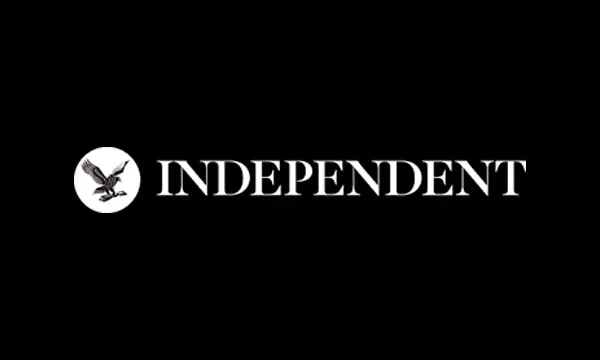
“Yeah, he doesn’t really like that car,” my friend Cory told me about the Kia EV6. Cory and I have this mutual friend, a Tesla Model 3 owner, who’s looking to dump it as soon as possible. But so far, nothing’s doing it for him, even that EV6. “He said it felt just too big and bulky behind the wheel.”
Our friend is an EV convert who went from a Golf hatchback to a Bolt EV, and now a Model 3. However, he, like the two of us, was mortified at Elon Musk’s not-a-sieg-heil-but-actually-was a-sieg-heil at President Donald Trump’s inauguration. Thus, he decided that it was time for his Model 3 sedan to go. He likes the Tesla, but this latest stunt crossed a line, and now he feels gross every time he drives his car.
He’s been having a hard time finding a suitable replacement. “Friends don’t let friends buy front-wheel-drive Polestars,” I said in response to a listing for a suspiciously cheap used early-generation Polestar 2. I guess it could have been okay, but I didn’t want him to end up with a weird and basic trim of the Polestar only be stuck with a car that no one wants if he decided somewhere down the line that he hated it.
The rest of the search went predictably bad. His search went both used and new; if it was new, it was going to be one of the competitive lease deals that turned ICE drivers into EV owners. Otherwise, it would have been a used car, since the pricing of used EVs is so low. His search wasn’t going well. The Nissan Ariya felt too middling to be a replacement for the Model 3. The Mustang Mach-E was too pricy. The Volkswagen ID.4 made sense as a lease deal, but the range on Volkwagen’s $149-a-month special was too low for him. Also, I had learned from a VW salesman the week prior on a personal visit, that it didn’t really exist on any dealership lots. Practically every eligible unit for the dirt cheap ID.4 lease was sold the weekend the special was announced.

My friend’s shopping woes, coupled with my own inability to find an EV I would like to spend money on, are why I’ve spent the past two weeks worried about the future of the market. Maybe I spent too much time in China last year, driving EVs that feel five to 10 years ahead of ours. But I think that EV drivers looking to move on from Tesla—and there seem to be a lot of them—face a conundrum about what to get next without compromising on range, charging or software.
To be clear, there are certainly good EVs in the U.S. market right now. Even great ones. But many of those are crazy expensive. And as the American auto industry starts to waffle on EVs with the Trump administration’s rules coming in, it’s hard to see who’s advancing fast enough to keep ex-Tesla owners from going back to gas cars.
Tesla’s models make up the bulk of sales in the U.S. EV market, yet as drivers pivot away, I don’t know if they’ll find what they’re looking for elsewhere. If these folks leave Tesla, where the hell will they go? The Tesla Model 3 and Model Y have hit a real sweet spot among EV buyers and drivers. I don't think regular brands have done the same. Thus, I am worried that as buyers get fed up with Musk and want to jump ship, there won’t be a ship to jump to.

Now, I know the Model 3 and Model Y aren’t perfect. Both the ride quality and fit and finish on pre-facelift models are terrible. The two cars often get a lot of hype for their Autopilot and Full Self-Driving tech, to sometimes gristly consequences; it’s not even a true eyes-off, hands-off semi-autonomous driving system. There are no physical rear door handles for the interior, there is a shocking lack of buttons on the car’s interior, and they’re notoriously expensive to insure because of how they’re made and how annoying it is to get replacement parts or a mechanic that’s certified to repair the vehicle.
And yet, it’s consistently sat at the top of the sales charts, despite being electric. The Model Y and Model 3 have sat on top 10 lists for a long time. Some would argue that it’s because of the Tesla Supercharger network, but I’d argue that it’s actually the cars themselves. (Or even how seamlessly they work with that charging network.) It’s easy to hate Tesla, but people get lost in the discourse over the CEO and forget why people buy these things to begin with.
The cars are kind of likable. And there’s still a lot they do better than other EVs out there. Try a Tesla smartphone app and then try the one for the Kia EV6. You’ll feel like you traveled back in time.
The Model 3 and Model Y clearly were meant to be somewhat premium entries, competitors to cars like the BMW 3-Series and X3. Whether or not you think they match that level of refinement (I don’t), I’d argue they dynamically match or better the BMWs. They accelerate as quickly as a sporty ICE premium compact and have direct and communicative steering up there with some of the best sports cars I’ve driven in recent memory. The two aren’t physically large cars, but they don’t feel dinky, either, slotting right in the perfect space between compact and midsized.
The central-mounted screen is responsive and feature-packed. They have integration with Apple Music and Spotify as well as AAA-level video games, all baked into the car itself. This is all sold through a no-haggle direct-to-consumer network for a reasonable monthly price. Some of these things may not be your or my cup of tea, but they are big reasons why consumers choose Tesla products. On the used market, the Model 3 and Model Y are some of the best deal-per-dollar things on the market.
“I’m going to miss a lot about that car,” said a different friend of mine, Shane. This person, also outraged by Musk’s antics, dumped his Model 3 for a used gas-powered Porsche Macan. He liked the Tesla’s software. The Model 3’s generally brilliant route planning and seamless charging scheduling were ace. It drove great, and the car was quick and handled well. It handled so well, he struggled to find a replacement that matched the level of dynamic ability and convenience.

He tried a Honda Prologue. The price was right, but the driving experience was uninspiring. The Volvo XC40 Recharge was better, but he didn’t like that car’s older software or squishy brakes. Everything else was just too expensive.
Sure, two anecdotes don’t necessarily make a trend. We’ve got a whole list of Tesla alternatives here at InsideEVs, and the EV market still continues to grow amongst non-Tesla competitors. But the truly better stuff is still in the ultra-luxury price bracket.
A Rivian R1 or Lucid Air may offer a similar software experience, but both cars are far larger and more expensive. They might be good Model S or Model X alternatives, but the $30,000 price delta won’t sway a Model 3 or Model Y owner.
Hyundai, Kia and General Motors do make solid alternatives, as evidenced by the three entities occupying second and third place in U.S. EV sales. But, right now, neither brand’s software stack can’t hold a candle to Tesla’s. For some, this will be a positive, but I suspect that the buyer who loves the hyperconnected tablet-style layout will feel like they’re going backward.
Sales of other EVs in the segment are low-key a rounding error, or the products are just too expensive. I question if some are truly selling on desire for their EV experience, or a desire to get a reasonably priced car that isn’t even all that reasonably priced.
In countries outside of the U.S., buyers are free to navigate to one of the many competitors that are at least cheaper. Or they can buy a Chinese brand like BYD, MG or Zeekr that follows the Tesla formula a little closer. If you’re in the U.S. or Canada, you can’t buy those cars. That’s really bad.

Perhaps I’m a pessimist, but things don’t feel great. Earlier this year, the market felt precarious, as everyone waited with bated breath as to what the Trump administration would bring. EV subsidies and investment on the federal level were on the chopping block, but there were still plans that more brands were on their way to introducing reasonably priced, affordable EV choices, namely to fight off global Chinese influence.
Now, everything’s up in the air. The Trump administration’s charging grant freeze and attack on EVs (and vehicle manufacturing in general) feels meaner, stronger and more nonsensical than anyone predicted; even brands that metaphorically kissed the ring at Mar-a-Lago are openly decrying these proposed tariffs and rollbacks that stand to hurt their entire business.
On the other hand, other companies like Stellantis are plenty happy to throw down their EV ball and go right back to slinging not-so-good ICE cars. They’ll let the “market” sort out their slower jog to electrification now, at least until some more advanced startup or other company’s breakthrough renders them even more irrelevant. To assume that Trump’s reversal of Biden’s pro-EV policies won’t affect sales and car development at all is a fantasy. And it’s also a fantasy to think that a lot of people aren’t moving on from Tesla because of Musk. They may well just throw in the towel on EVs, period, and that’s not good for this sector as a whole.
Polestar’s new CEO seems to get this. He’s openly targeting disgruntled ex-Tesla owners. While Polestar’s lineup isn’t exactly some one-to-one replacement for the Model 3 and Model Y—far from it, in fact—this is a smart move. If there’s a vacuum, you move in to fill it. You might even liken that to how people flocked to Bluesky and Threads after Musk took over X and flushed it down the tubes; where’s the EV equivalent of that?

I suppose there is a glimmer of hope. Honda’s working on a self-developed EV platform and operating system that seems way more advanced than what’s being used in their current ICE or EV cars. Volkswagen is tapping into Rivian specifically for better software. Some experts say that the OGs of emulating and beating Tesla, the Chinese, could have a few models on sale in the U.S. in the near future, tariffs be damned.
More models are coming, but if they’re looking to take up the disgruntled Tesla owners who loved their software-driven electric cars, then automakers need to hurry up and introduce something new, and fast.
Contact the author: Kevin.Williams@InsideEVs.com







